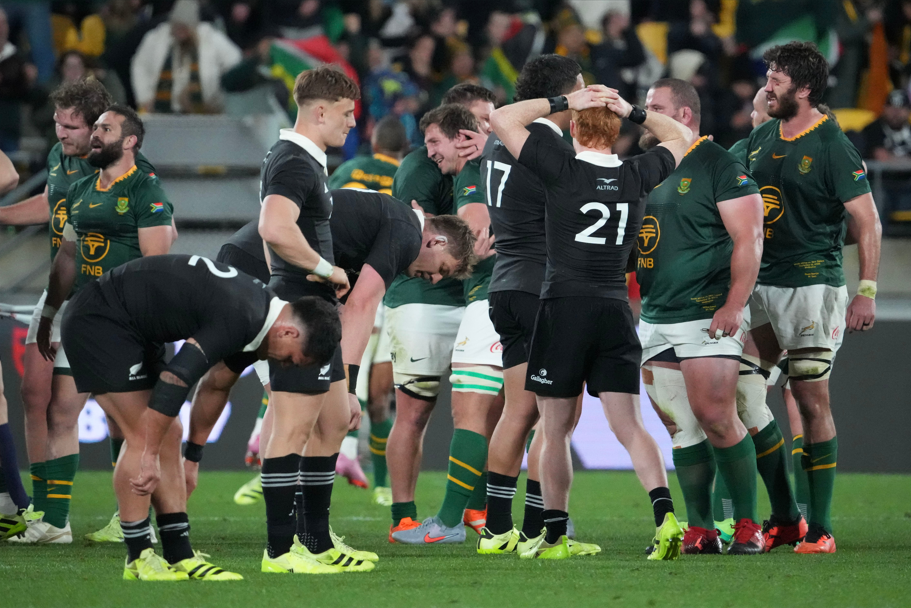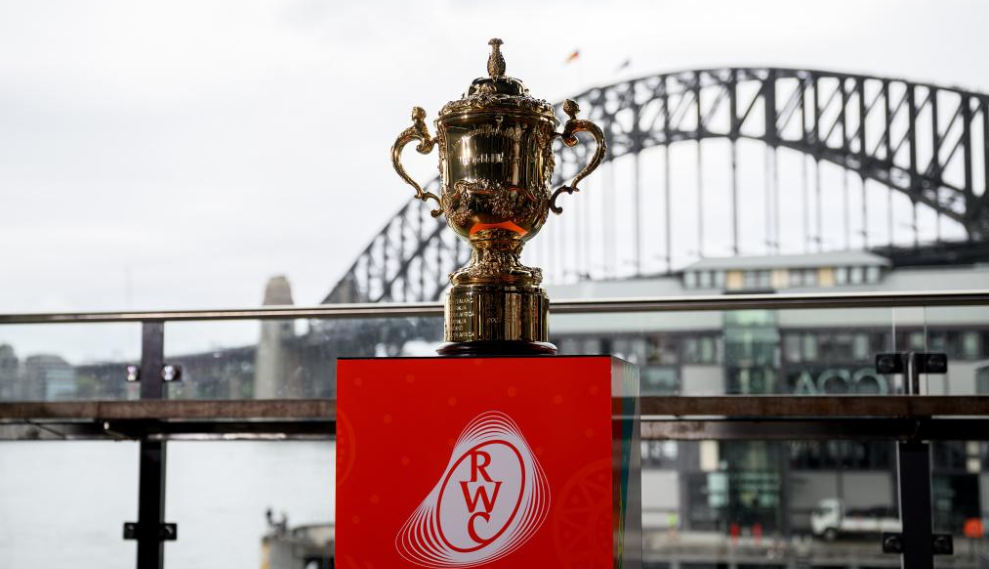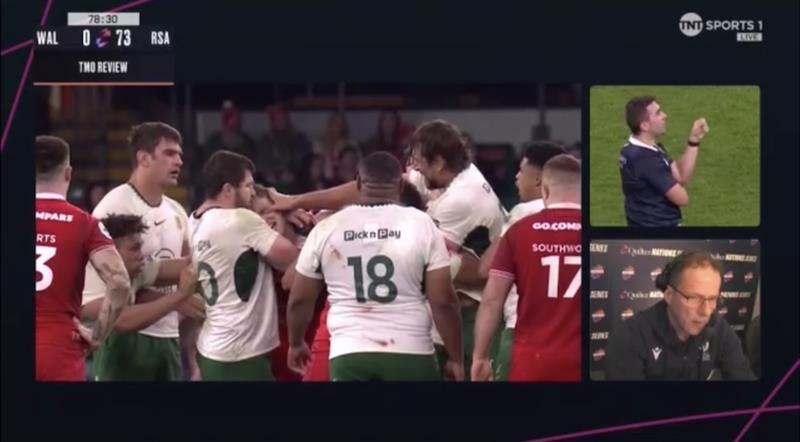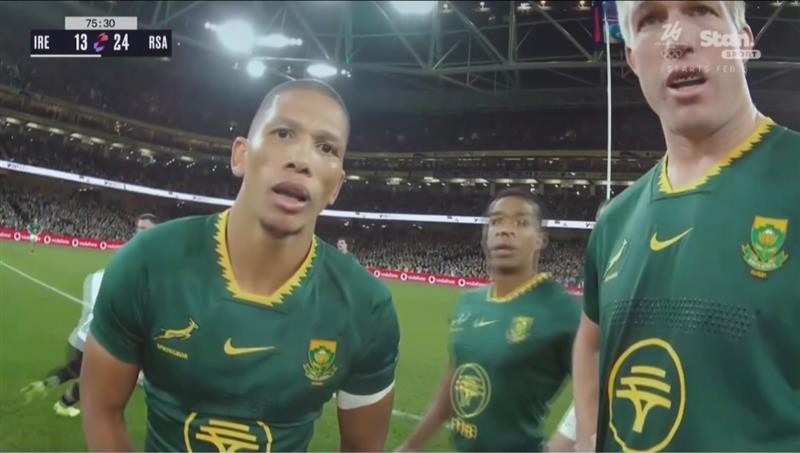On 13 September 2025, at Wellington, South Africa didn’t just beat New Zealand – the Springboks dismantled them 43-10. That 33-point margin is the worst test defeat in All Blacks history. A first half that lagged, a second that collapsed. Six tries to one. Unanswered points from the 45th minute onwards. It wasn’t just a bad night. It was a turning point.
If you believed there was an undisputed king in world rugby, the Wellington scoreboard scratched out that illusion. Because what this match did was confirm what had already been creeping up: the All Blacks are no longer invincible. They are beatable. And everyone above them has slowly begun to sense opportunity – from the Springboks and Pumas, to the Six Nations nations up north.
The Cracks in the Armour: Signs of Decline
New Zealand’s dominance isn’t just legend; it’s built on consistency, depth, mental toughness. But here are the signs that the machine has been wearing thin:
- Argentina rising: Used to be that Los Pumas were happy scoring well but losing. Recently, they’ve turned that script – wins away from home, close scorelines, physicality matching NZ.
- South Africa’s methodical bruising: The 35-7 at Twickenham in 2023 already threatened the myth. The 43-10 was confirmation.
- Ireland’s breakthrough: Perhaps the most significant signal from Europe. In 2022, Ireland toured New Zealand and achieved what no other Irish side done before had: their first ever test win on NZ soil, in Dunedin. Three days later they won again in Wellington to take the series 2-1, a historic maiden Test series victory on Aoetearoan soil. That tour wasn’t a one-off. It changed belief. It changed strategy. It was also the moment when All Blacks fans realised (on their own soil) that the black jersey might not always dominate.
- England’s statement: The 2019 Rugby World Cup semi-final in Yokohama – England played one of the cleanest, most damaging matches we’ve seen from a challenger: physical forwards, attacking clarity, denying NZ time and space, breaking apart their set plays. England showed you can beat them not with flair alone but with discipline. One of the coaches, Steve Hansen, admitted that England “did things a little better than we did.

Six Nations Nations: What Each Does Right – and What Holds Them Back
One of the reasons NZ’s decline feels palpable now is the way Six Nations teams have evolved: not just physically, but mentally. Let’s take each in turn. Think of them like different instruments in an orchestra, each adding to the dissonance the All Blacks now face.
Ireland – The Turnaround Standard
What they get right: Belief, structure, consistency under pressure. Ireland’s 2022 tour is the exemplar. Andrew Porter scoring two tries early, calm heads under yellow cards, discipline in defense and at the breakdown. They didn’t try to match flair at every turn; they leaned on forward collisions, territorial pressure, smart kicking, and star performance at the breakdown (e.g. Peter O’Mahony, Tadhg Beirne).
What still haunts them: Big knockout games. They’ve beaten the All Blacks in tests, in NZ, even on neutral grounds. But in World Cup quarter-finals or semis, NZ still seem to find ways (pressure, refereeing controversies, late errors) to turn things around. That psychological edge, though diminished, still tilts in favor of NZ in certain moments. Also, while their forward pack and structure are strong, their backline sometimes lacks the sudden searing pace that can punish NZ when the defense gets stretched.
England – The Fire & Fluctuation
What they get right: When England commit to the physical, collision-based rugby, they are lethal. The 2019 semi was a clinic in tactically denying NZ the ball, in the chaos of turnovers, in shutting down their phases. Eddie Jones spoke beforehand of pressure chasing the All Blacks down the street – and in that match, England made sure NZ felt every ounce of that pressure.
What they get wrong: Rarity of ideal execution. Their peaks are high but their valleys deep. They become reactive rather than proactive. And they sometimes drift into thinking they must play NZ’s game (fast offloads, broken field) rather than imposing their own. That undermines them when the game is tight. Also, discipline, especially in big moments, still undermines them.
France – Dazzle & Distraction
What they get right: The ability to shock. From classic World Cup knockouts (1999, 2007) to decisive tests more recently, France have shown they can shift momentum with flair – unexpected offloads, counter-attacks, breaks that force yellow cards. Their crowd remnants, their ability to turn a contest into an art show suddenly, can disorient NZ.
What they get wrong: Consistency and composure. When the game gets tight, fatigue or defensive lapses cost them. They sometimes lose games they should win because they allow emotion to override structure. Bad discipline, lack of follow-through in set piece, moments of mental collapse.
Wales – Ghosts of Long Ago
What they get right: Passion. Defence under the storm. When Wales have something to fight for – pride, history, a chance to spoil someone’s run – they often produce stiff resistance. Their breakdown tension, their grunt in the forward pack can make the All Blacks work for small gains.
What they get wrong: Belief. The weight of history – “we haven’t beaten you since 1953” — is a real burden. Even when in games, Wales seem to expect that they’ll lose. Close games often slip away. Their attack often conservative; when they need to strike, they’re hesitant. They should have had two Test wins against the might All Blacks in the glorious Warrenball era, but still fluffed their lines when it mattered most.
Scotland – Chaotic Hope
What they get right: Unpredictability. Players like Finn Russell have shown how Scotland can unsettle rigid systems. They bring broken-play magic. In some tests, their willingness to gamble forces NZ to adjust – even when they haven’t got the execution to finish. In the age of the United Rugby Championship, you can’t shake off the feeling that they will claim a Kiwi scalp sooner rather than later
What they get wrong: Mental finishing. Scotland have flirted with wins (Murrayfield 2017 etc.) but never quite landed a blow. They show glimpses but still let games slide in later stages. Also, depth and physical polish lag behind the best challengers.
Italy – Respect Without Rivalry (So Far)
What they get right: Heart, occasional bursts of organisation; a desire to strike, not simply defend or kick. Italy have improved in contact work, in fitness, in generating momentum when in possession.
What they get wrong: The gulf still exists. The All Blacks’ 2023 World Cup 96-17 win over Italy made it brutally clear. To beat NZ, you need not only structure and belief but elite technique, elite conditioning, elite control. Italy are not yet at that level. And belief is shaky: they approach NZ games expecting to lose, so they don’t build momentum until too late. They are awed by that legendary black jersey, still.
Wellington 2025: The Damage Done
That 43-10 result isn’t just the worst margin for NZ; it’s the moment the old order collapsed. Here are what that match and its context have done:
- It redefined what is possible: The Springboks in Wellington showed that you don’t need to just contain NZ – you can outscore them, outwork them, dominate from start to finish. For the challengers, that’s a template: not just strategies of survival, but strategies to seize.
- Momentum of belief among challengers: Teams like Ireland or France will point at Wellington and say: if we can prepare well, stay disciplined, play our strengths – maybe we are the ones to wear the crown.
- Pressure now accrues on NZ: Instead of being the hunted, sometimes they are the hunters – or worse, the ones expected to defend in situations they once dictated. They’ll need to coach the psychological aspect now more than ever: handling pressure when they are behind, when doubt creeps in.
- Strategic changes inevitable: Selection depth, mental conditioning, injury management, discipline – all under renewed scrutiny. Drop a yellow, concede a cheap penalty, lose a turnover at a bad time – these are the errors that now carry the weight of narrative, not just scoreboard.
Still Dangerous, Still Revered
Let’s not over-correct. The All Blacks remain among the greats. Their infrastructure, youth systems, coaching heritage, fan culture – these do not vanish overnight. In Córdoba in 2025, they beat Argentina 41-24 to reclaim or reinforce ranking supremacy. They still have Eden Park… still have shadows of fear.
They still produce moments: blistering runs, breakdown steals, linebreaks, pressure under chaos. Teams underestimate NZ at their peril. But that underestimation is becoming more frequent – and more costly.
No Longer King, But No Capped Jester
What we are seeing now is something rarer: a transition in real time. A dynasty not yet toppled, but humbled. A team still fearsome, but mortal.
The Six Nations teams contribute significantly to this shift. Ireland and England have proven blueprints for how to beat the All Blacks; France and Scotland enough to unsettle them; Wales sometimes enough to remind them that history cuts both ways. Even Italy, when improving, serves as a gauge of how far elite standards still stretch.
Anecdotes & Scholars’ Footnotes
- In Dunedin, July 2022, Andrew Porter’s tries came in the 3rd and 48th minutes. The early blow set the tone; the second came just after half-time when Ireland really needed to silence the home crowd’s belief. That match featured yellow cards for NFL-reminiscent types of rough play (high shots, shoulder charges), but Ireland kept discipline under pressure, especially when NZ went down to 14 and 13 men.
- England’s semi-final in 2019: Eddie Jones pre-game line “No one thinks we can win … the pressure is going to be chasing them down the street.” He then watched his squad execute it, beat NZ 19-7. Steve Hansen afterwards: “They did things a little better than we did.”
- Ireland’s 2022 series win: Johnny Sexton’s cool boot work, Rob Herring coming off the bench for a decisive try in Wellington. There was a moment early in the third test where NZ clawed back nearly from 22-3 down but Ireland’s defense held; they didn’t panic.
Final Word: The Crown Is Free
The 43-10 isn’t just a statistic. It’s proof. Proof that rugby’s greatest dynasty is now part of the arena, not above it.
South Africa showed dominance; Argentina trajectory keeps rising; Ireland rewrote belief; England, France, Wales, Scotland all chipped in. Italy, while not yet threatening, are part of the ecosystem of change.
No longer is there an undisputed monarch. There are challengers, hungry and well-prepared. The free-for-all has begun. The crown is up for grabs.




